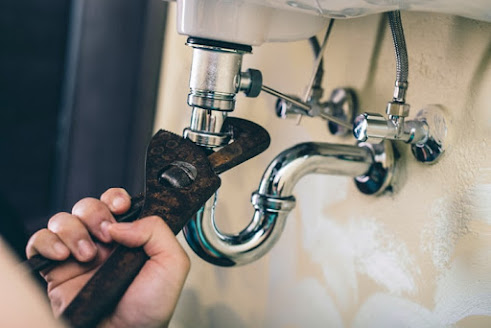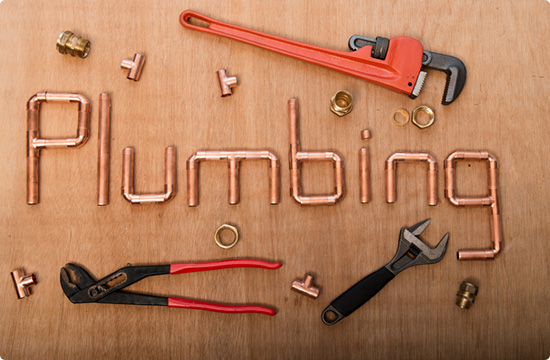Plumbing Noises You Must Know About
Plumbing Noises You Must Know About
Blog Article
We have uncovered this great article relating to Why is My Home Making Strange Plumbing Noises down the page on the internet and felt it made perfect sense to relate it with you here.

To detect noisy plumbing, it is important to figure out initial whether the undesirable sounds occur on the system's inlet side-in other words, when water is transformed on-or on the drainpipe side. Sounds on the inlet side have actually differed reasons: too much water pressure, worn shutoff and tap parts, incorrectly linked pumps or various other home appliances, incorrectly put pipe bolts, and plumbing runs containing too many limited bends or other restrictions. Noises on the drain side generally originate from inadequate place or, similar to some inlet side sound, a format containing tight bends.
Hissing
Hissing noise that takes place when a faucet is opened somewhat usually signals too much water stress. Consult your regional public utility if you suspect this trouble; it will certainly be able to tell you the water pressure in your location as well as can mount a pressurereducing valve on the inbound water supply pipe if required.
Various Other Inlet Side Noises
Squeaking, squeaking, scratching, breaking, as well as touching usually are triggered by the development or contraction of pipelines, usually copper ones providing hot water. The sounds happen as the pipes slide against loose fasteners or strike nearby residence framework. You can often determine the place of the trouble if the pipes are subjected; just follow the noise when the pipes are making sounds. More than likely you will find a loose pipe hanger or a location where pipes lie so near flooring joists or other mounting items that they clatter against them. Attaching foam pipe insulation around the pipelines at the point of get in touch with must fix the issue. Be sure bands and wall mounts are protected and also offer ample support. Where feasible, pipeline fasteners need to be connected to massive structural components such as foundation wall surfaces instead of to framing; doing so decreases the transmission of resonances from plumbing to surface areas that can enhance and also transfer them. If affixing bolts to framework is inescapable, cover pipelines with insulation or various other durable product where they contact fasteners, as well as sandwich completions of brand-new bolts between rubber washing machines when mounting them.
Fixing plumbing runs that experience flow-restricting limited or numerous bends is a last resort that ought to be taken on only after seeking advice from a proficient plumbing contractor. Sadly, this circumstance is relatively usual in older residences that may not have been built with indoor plumbing or that have actually seen numerous remodels, especially by beginners.
Babbling or Shrilling
Intense chattering or shrieking that happens when a valve or tap is activated, which usually disappears when the fitting is opened fully, signals loose or faulty interior components. The option is to change the shutoff or faucet with a brand-new one.
Pumps and also appliances such as washing machines and dishwashing machines can transfer motor sound to pipelines if they are poorly connected. Link such items to plumbing with plastic or rubber hoses-never rigid pipe-to isolate them.
Drainpipe Noise
On the drain side of plumbing, the chief goals are to eliminate surfaces that can be struck by falling or rushing water and to insulate pipes to contain unavoidable sounds.
In new construction, bathtubs, shower stalls, commodes, and also wallmounted sinks and also basins should be set on or versus resistant underlayments to lower the transmission of audio via them. Water-saving bathrooms as well as taps are less noisy than conventional models; install them instead of older kinds even if codes in your location still allow utilizing older fixtures.
Drainpipes that do not run up and down to the cellar or that branch right into straight pipe runs supported at floor joists or other mounting present particularly troublesome noise problems. Such pipes are large sufficient to emit substantial resonance; they likewise bring significant amounts of water, that makes the circumstance worse. In new construction, specify cast-iron dirt pipelines (the big pipes that drain toilets) if you can afford them. Their massiveness has a lot of the sound made by water going through them. Likewise, prevent routing drains in wall surfaces shown bed rooms and areas where individuals collect. Walls having drains must be soundproofed as was explained earlier, making use of dual panels of sound-insulating fiberboard and wallboard. Pipelines themselves can be covered with unique fiberglass insulation made for the objective; such pipelines have an impervious plastic skin (often including lead). Outcomes are not constantly acceptable.
Thudding
Thudding sound, commonly accompanied by shuddering pipelines, when a faucet or appliance shutoff is shut off is a condition called water hammer. The sound as well as vibration are brought on by the reverberating wave of pressure in the water, which instantly has no place to go. Sometimes opening a shutoff that releases water rapidly right into a section of piping having a limitation, joint, or tee fitting can create the very same condition.
Water hammer can generally be cured by mounting fittings called air chambers or shock absorbers in the plumbing to which the trouble valves or taps are connected. These gadgets allow the shock wave produced by the halted flow of water to dissipate in the air they have, which (unlike water) is compressible.
Older plumbing systems may have brief vertical sections of capped pipeline behind walls on faucet competes the same function; these can at some point fill with water, minimizing or damaging their effectiveness. The treatment is to drain the water system entirely by shutting off the primary water system valve and opening all taps. After that open the primary supply shutoff and also close the taps individually, starting with the faucet nearest the shutoff and also ending with the one farthest away.
3 Most Common Reasons for Noisy Water Pipes
Water hammer
When water is running and is then suddenly turned off, the rushing liquid has no place to go and slams against the shut-off valve. The loud, thudding sound that follows is known as a water hammer. Besides being alarming, water hammer can potentially damage joints and connections in the water pipe itself. There are two primary methods of addressing this issue.
Check your air chamber. An air chamber is essentially a vertical pipe located near your faucet, often in the wall cavity that holds the plumbing connected to your sink or tub. The chamber is filled with air that compresses and absorbs the shock of the fast moving water when it suddenly stops. Unfortunately, over time air chambers tend to fill with water and lose their effectiveness. To replenish the air chambers in your house you can do the following. Turn off the water supply to your house at the main supply (or street level). Open your faucets to drain all of the water from your plumbing system. Turn the water back on. The incoming water will flush the air out of the pipes but not out of the vertical air chamber, where the air supply has been restored. Copper pipes
Copper pipes tend to expand as hot water passes through and transfers some of its heat to them. (Copper is both malleable and ductile.) In tight quarters, copper hot-water lines can expand and then noisily rub against your home's hidden structural features — studs, joists, support brackets, etc. — as it contracts.
One possible solution to this problem is to slightly lower the temperature setting on your hot water heater. In all but the most extreme cases, expanding and contracting copper pipes will not spring a leak. Unless you’re remodeling, there's no reason to remove sheetrock and insert foam padding around your copper pipes.
Water pressure that’s too high
If your water pressure is too high, it can also cause noisy water pipes. Worse, high water pressure can damage water-supplied appliances, such as your washing machine and dishwasher.
Most modern homes are equipped with a pressure regulator that's mounted where the water supply enters the house. If your home lacks a regulator, consider having one professionally installed. Finally, remember that most plumbers recommend that water is delivered throughout your home at no lower than 40 and no greater than 80 psi (pounds per square inch).
Whatever the state of your plumbing, one thing is certain — you’re eventually going to encounter repair and replacement issues around your home that require professional help. That’s where American Home Shield can come to your aid.
https://www.ahs.com/home-matters/repair-maintenance/causes-of-noisy-water-pipes/

As a keen person who reads on How To Fix Noisy Pipes, I thought sharing that portion was a good idea. Loved our piece? Please share it. Let others locate it. We enjoy reading our article about Why Your Water Pipes Are Noisy and How To Shut Them Up.
Schedule And Pricing Report this page